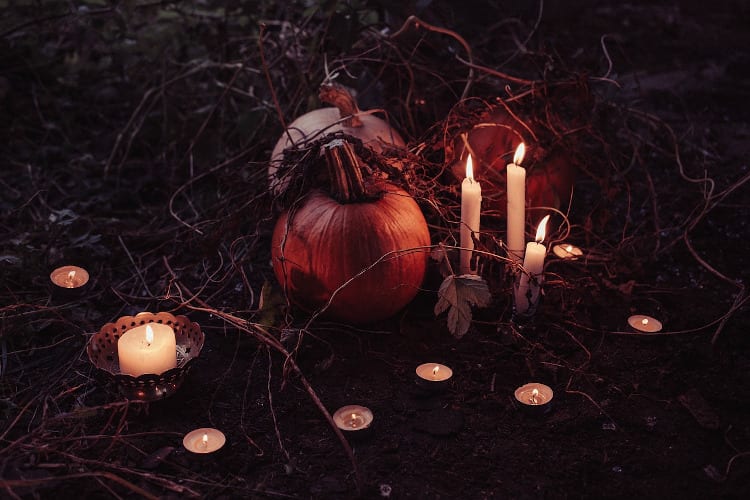Halloween is just around the corner. Halloween is my wife’s favorite festival, and we have been decorating our house this past week. We decorate more for Halloween than any other festival, which is fun. This year, I made wooden tombstones that we have installed in our yard, and they have joined the skeletons and pumpkins that we usually use to decorate. Also, this year will be the first we take our daughter door-to-door trick-or-treating, which should be fun.
But there is more to this time of year than scary costumes and pumpkins.
The ancient Celtic festival of Samhain (SAH-win or SOW-win) is celebrated from sundown on October 31st until sundown on November 1st. Samhain is the last of the four great Celtic harvest festivals, the others being Imbolc (February 1st), Beltane (May 1st), and Lughnasadh (August 1st). Samhain is the halfway point between the autumn equinox and the winter solstice and was the time of the year when the cattle were brought back from their pasture for the winter.
Many rituals and traditions are associated with Samhain, like the lighting of bonfires. These bonfires were seen as protective and used to protect the cattle as they were brought back. There was also a cleansing element to these fires, with many associated rituals. It was believed that the bonfire would help to “beat back” the decay and darkness of the coming winter. Bonfires are symbolically used to “burn up and destroy all harmful influences.”
The smoke from these fires was thought to have protective properties. Wood would be gathered from each home in parts of Scotland to light a central bonfire. As the fire burned, people would lay on the ground as close to it as possible and let the smoke roll over them. As the smoke rolled over them, they would be cleansed and protected for the coming year. Others would run through or jump through the smoke for the same purpose.
In the early modern era, the tradition of guising began—Guising, when people would dress in costume and recite a verse in exchange for food. The practice of guising is where the modern American Halloween tradition of children dressing in costume and going door to door is derived.
But there is also a spiritual connection with Samhain. Samhain, like Beltane, is a liminal or threshold festival when the veil between this world and the next becomes thin, almost nonexistent. The Celts believed that the Aos Sí (sith in Scots), the spirits, or the fairies could more easily come into our world during this time of the year. The Aos Sí were believed to be fallen angels or Tuatha Dé Danann, meaning the “People of Danu.” Offerings of food and drink would be left to appease the Aos Sí and ensure that their livestock would survive the winter.
Winter, with its images of dying in nature, was seen as the most appropriate time of the year to honor the dead. The thinning of the veil meant that the souls of departed family members would visit their homes seeking hospitality. Places would be set for them at the table, and food would be left to eat. James Frazer (1922) suggests, “It was perhaps a natural thought that the approach of winter should drive the poor, shivering, hungry ghosts from the bare fields and the leafless woodlands to the shelter of the cottage.”
In Celtic mythology, apples are associated with the other world. For example, faces would be carved in apples, while on the back, the name of a dead person would be carved. Then, the apples would be taken to the woods or a field. Finally, a prayer would be said for the person named, and the apple would be left as an offering for the animals to eat.
In the 9th century, the Western Christian Church endorsed November 1st as All Saints Day; a day set aside to commemorate the saints of the Church, and November 2nd as All Souls Day, the day when prayers are offered for all of those who have gone before us to the other world.
This is a special time of the year for remembrance. Take some time to remember those who have gone before us in whatever tradition you practice. Visit the cemetery, attend a church service, carve an apple, whatever it is, remember.

